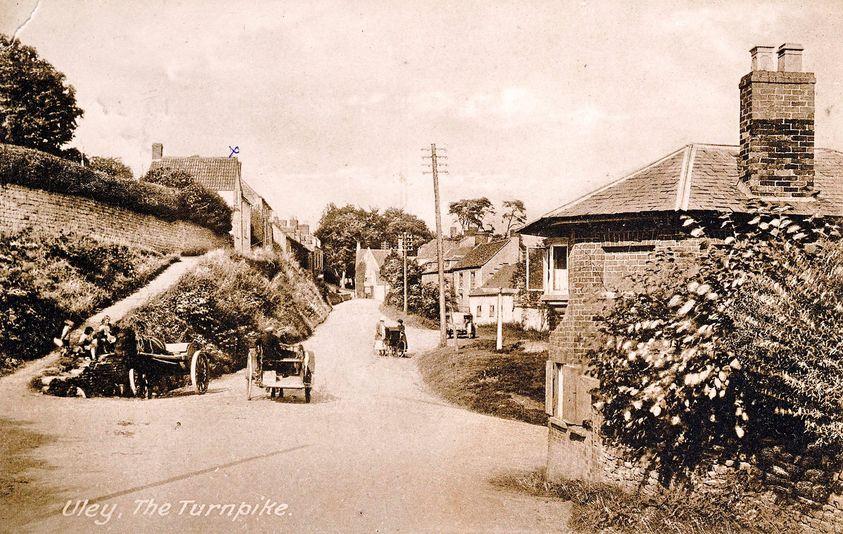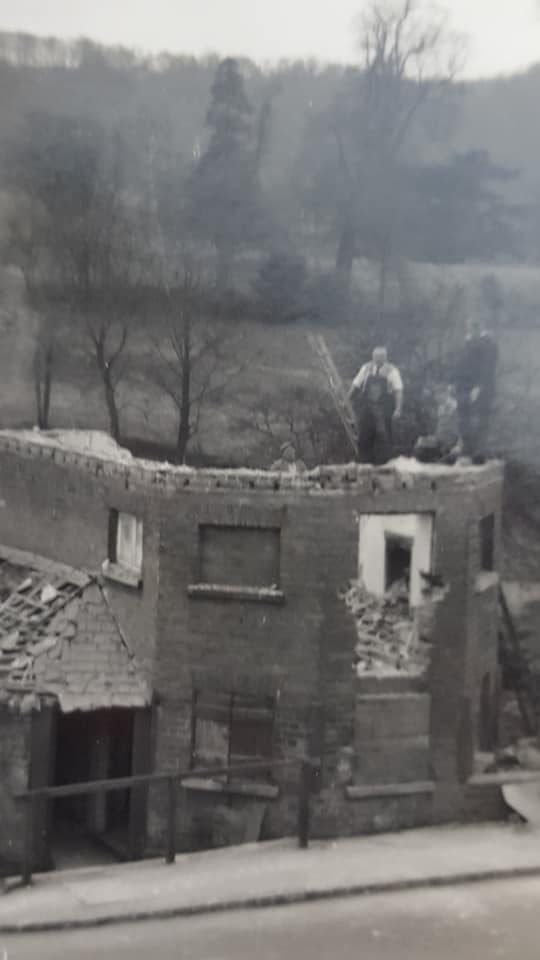Uley Turnpike (Toll House)
Turnpikes, or Toll Houses, came into being because a couple of centuries ago small parishes were finding it difficult to find the maintenance to keep the roads in good order. One way to improve the situation was getting the traveller to contribute, so in the late seventeenth century the first Turnpike Act was passed. The definition of a turnpike is literally a frame of pikes, or gates across the road, that can be operated to allow the passage of horses & carts etc. The money raised from the tolls would help towards the costs of improving & maintaining the road. Most Turnpike Trusts were wound up under the General Acts of Parliament between 1873 & 1878. Under the Highways Act of 1878 all disturnpiked roads became 'Main Roads'.

Photo credit: A postcard with the Turnpike on the right, provided by Barbara Southerland via the Old Dursley Facebook Group.
The Uley Turnpike house was situated at the lower end of the village at the crossroads, opposite the Washpool, on the main B4066 to Dursley. This was unfortunately demolished some years ago, probably in the 1960's. It had a three-sided frontage with windows in each face so that the Tollkeeper could see down the road watching for on-coming traffic. It was built close to the roadside to make it easier for the toll to be collected. It had a board of charges fixed to the outside wall which were lamplighted at night. The tollkeeper was required to unlock the gates & also to sign an oath to confirm that all monies were handed over to the Turnpike Trust.
There were probably two gates at the Uley turnpike and possibly a milestone nearby. However, carts & wagons had a way of avoiding the charges by getting to Dursley, via Newbrook to the Hopyard, over the River Ewelme, or past Scaddings Mill (now demolished) and towards Grimhills up to Shadwell and on to Dursley.
Here is an example of the tolls that applied to through traffic.
- Every Horse or other Beast drawing any coach, chariot, landau, chair, gig, or hearse 6d
- Every Horse or other Beast drawing a wagon, cart, sledge or any other such carriage, depending on the wheel size, the charges ranged from 6d to 7.1/2d
- Carriage with 4 wheels fixed to another carriage 2 shilings.
- Carriage with 2 or 3 wheels affixed 1s.
- Horse, Mule or Ass not drawing a carriage 2d.
- Every score of oxon, cows, or cattle l0d.
- Every score of calves, hogs, swine, goats, sheep or lambs 5d.
Catherine Day who has lived in Uley all her life said that her Grandfather told her that the owners of animals being driven (i.e. walked) through the village and who could not pay the toll, their animals were impounded on the Pound Bank (which is where the car park next to the existing bottom bus shelter is now) and then taken to the Cowpen (now Woodstock Terrace).

Photo credit: Catherine Day - the demolition of the Turnpike in the 1960s.
Written by Margaret Groom.

